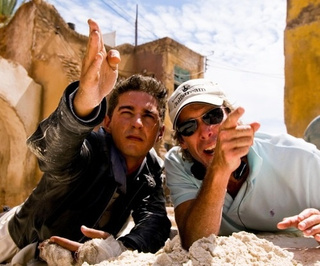 By Armond White
By Armond White
Why waste spleen on Michael Bay? He’s a real visionary–perhaps mindless in some way (he‘s never bothered filming a good script), but Transformers 2: Revenge of the Fallen is more proof he has a great eye for scale and a gift for visceral amazement. Bay’s ability to shoot spectacle makes the Ridley-Tony-Jake Scott family look like cavemen. Who else could compose a sequence where characters (albeit robots) go from the bottom of the sea to another planet in one seamless, 30-second, dreamlike flow?
That transition typifies the storytelling in this sequel to 2007’s Transformers. Teenager Sam Witwicky (Shia LaBeouf), on his way to college, is drawn back into the first film’s battle between mechanical aliens (human-friendly Autobots and dastardly Decepticons). Sam innocently acquires the secret code of the aliens’ cosmic history–something to do with his American kid innocence and appreciation of middle-class life’s abundance. Based on the original 1980s Transformer toys by Hasbro and subsequent TV cartoons and comic books, the Transformer movies expound on this cultural plenitude. Their fascination with technology–the way common objects rearrange, expand or shrink as if having a benevolent or malicious life of their own–drives the stories.
Bay is an ideal director to realize this peculiar genre which remakes the surfeit of adolescent commercial media as a means of multimedia gratification. These cars, trucks, motorcycles and planes metamorphose fast but their transfiguration is like the mechanical toy descriptions in E.T.A. Hoffman–fantastic and uncanny. Bay’s post-nuclear version of Hoffman’s The Nutcracker stirs emotion from our pop culture, industrial experience then connects to ancient spiritual myths (like Kingdom of the Crystal Skull). It’s too much the production of industrialization to be considered magic yet Bay’s sheer fascination with seeing is impressively communicated.
In the history of motion pictures, Bay creates the best canted angles–ever. The world looms behind a human protagonist with the enormity of life itself. (My favorite: a windblown Megan Fox facing the audience as a jet fighter slowly, majestically glides behind/above her”). Bay already has a signature: the up-tilted 360-degree spin (gleefully parodied in Hot Fuzz). Here, he flashes it whenever Sam kisses his girlfriend. Bay photographs Fox and luscious/vicious rival Isabel Lucas like pin-ups–a pop culture joke encompassing what every young girl, post-Madonna, is told is OK. (They’re girls “with options” as Sam says.) There’s still advertising porn in Bay’s soul but it’s so expressive of the media norm that it’s funny–proof we’re watching nothing more than fantasy. This commercialized lifeforce “Cannot be destroyed, only transformed” (as a Decepticon warns). Transforming is the capitalist dream of re-branding. It’s not transcendence–thus, the need for the basic sci-fi story of good vs. evil where Revenge of the Fallen alludes to the story of Lucifer.
Transformers doesn’t simultaneously critique pop culture like Joe Dante’s Small Soldiers, Paul W.S. Anderson’s Death Race or Joseph Kahn’s near-miraculous Torque (none of Bay’s mechanical anthropomorphism matches the wit of how Torque’s human characters live through their vehicles) but there is satire in Sam’s roommate Leo’s (Ramon Rodriquez) Everynerd chatter: “The internet’s pure truth! Video doesn’t lie!” That breathless naivete indicts Transformers’ target audience yet there’s something in scenes of an overturned carrier ship, of alien assaults on the Great Pyramids or Sam’s Clockwork Orange torture that is close to wonderful. Bay’s skills have found their appropriate subject now that he’s abandoned fake history (Pearl Harbor) for fantasy.
Follow Armond White on Twitter at 3xchair
